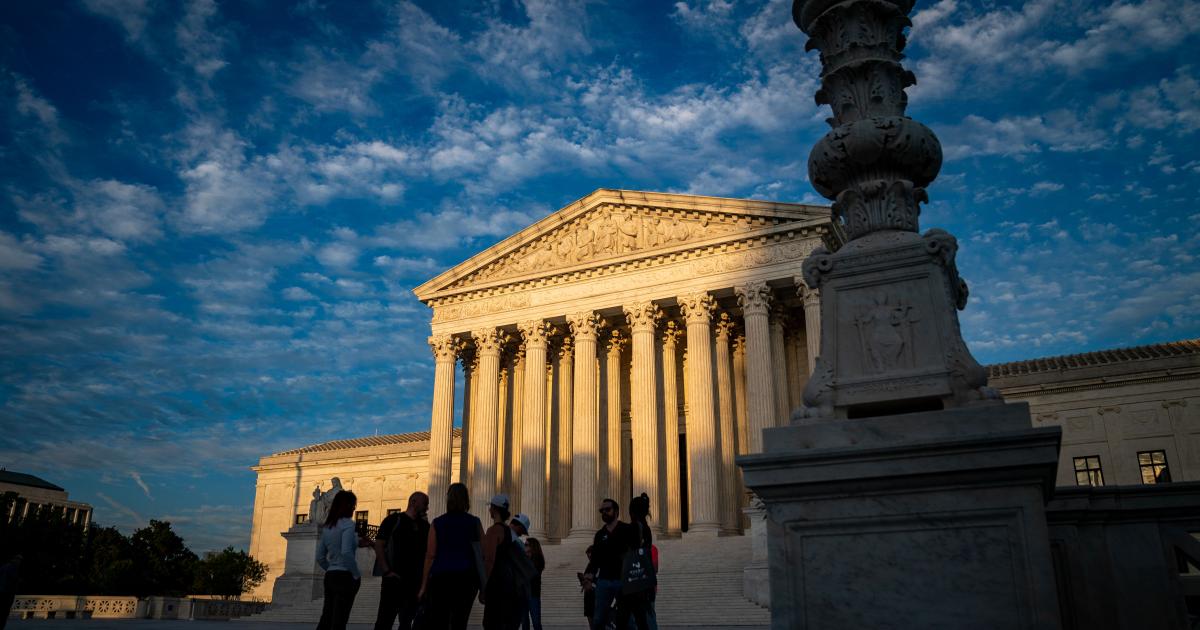The Supreme Court’s new term began on the first Monday in October. As I write this, the Court has agreed to hear about 25 cases and will add about 40-50 more in the coming months. The judges will hear arguments in these cases until the end of April and announce their decisions by the end of June.
While the judiciary in general, and the Supreme Court in particular, have become more powerful than they were supposed to be, the American people are ill-equipped to understand and monitor what they do. Here are some suggestions to fix it.
First, the public can literally watch the Court’s arguments for the first time since March 2020. During the COVID pandemic, the Court provided a live audio feed, but only judges, lawyers and the press could attend. This arrangement actually had an advantage. Not only could the audience listen to the argument as it happened, but they could understand it better because the judges took turns asking questions.
>>> Restore the constrained judicial vision
Second, the public can follow not only what the Court does, that is, its decisions in particular cases, but also how the Court does it. Several cases already in the file deserve to be monitored:
- In 303 Creative LLC v. Elenis, the Court will decide whether a state law prohibiting discrimination based on sexual orientation violates the First Amendment. Christian design company owner Lori Smith wants to start building wedding websites but opposes same-sex marriage and wants to release a statement explaining her religious objection. A state law, however, prohibits discrimination by businesses open to the public, including even making such a statement. Smith sued on free speech grounds and the lower courts ruled against her.
- Andy Warhol Foundation c. Goldsmith involves the work of a famous artist. Andy Warhol created a series of prints by making some aesthetic changes to a copyrighted 1981 photograph of musician Prince. The photographer sued for copyright infringement; the Andy Warhol Foundation claimed the changes amounted to a “fair use” of the photograph as they transformed it into a new work. The United States Court of Appeals for the Second Circuit disagreed, finding that the prints remained “recognizably derived” from the original.
- In Merrill v. Milligan, Alabama voters and organizations allege the state’s redistricting plan following the 2020 census violates Section 2 of the Voting Rights Act, which prohibits practices or discriminatory voting procedures on the basis of race. Challengers say the plan has too few constituencies in which a majority of voters are black. The lower court blocked the new map from taking effect.
- Sackett v. Environmental Protection Agency concerns how the EPA enforces a key provision of the Clean Water Act. In 2007, the EPA prevented Michael and Chantell Sackett from building a home because their Idaho residential land, which had no surface water, qualified as “navigable waters” under the Clean Water Act. A 2006 Supreme Court decision suggested two different standards for defining this term, and in this case the Ninth Circuit used the broader standard to rule in favor of the EPA. This case will allow a majority to clarify how this provision of the Clean Water Act should be applied.
- Finally, two cases brought by the group Students for Fair Admissions challenge the admissions process at Harvard College and the University of North Carolina for discrimination against Asian American applicants. The cases were originally combined, but the court separated them so Judge Ketanji Brown Jackson, who served on Harvard’s board of supervisors, could participate in the North Carolina case. Harvard and UNC admit that race is a factor in admissions, but argue that it is allowed under a 2006 Supreme Court decision involving the University of Michigan Law School. The lower courts in both cases upheld the schools’ admissions policies.
These and other cases that the Supreme Court will deal with are important not only for what the Court does, that is, which side wins in the end, but also for how the Court achieves that result. Justice Clarence Thomas explained that the judicial task is to “interpret[ing] and apply[ing] written law to the facts of particular cases. Some of these cases involve the Constitution, while others involve statutes, and the Court’s method of interpreting these written provisions will identify the power the judges believe they have.
>>> Judicial independence is an obstacle to power, necessary for freedom
The Constitution and laws, like almost every other written document we encounter in our daily lives, are the meaning of their words. Whoever controls the meaning of the words therefore controls what the Constitution and the laws really are. Does the Supreme Court have so much control over our laws that it means what five justices say it means? While America’s founders designed our system of government, the correct answer is no.
When the Supreme Court struck down a restrictive gun law earlier this year, Justice Thomas wrote by a 6-3 majority that the “meaning of the Constitution is fixed according to the understanding of those who ‘have ratified’. Even President Biden-appointed Judge Jackson repeatedly said during her confirmation hearing that the Constitution must be interpreted according to its “original public meaning.” This principle is central to the assessment of how the Supreme Court interprets and applies statutory law in making its decisions.
Now that the Court’s term is up, everyone should follow what this branch of its government does and how it exercises the power the Constitution has granted it. The Court publicly announces its decisions and offers detailed explanations of how it reached them, so that we can all be more informed and engaged citizens.

